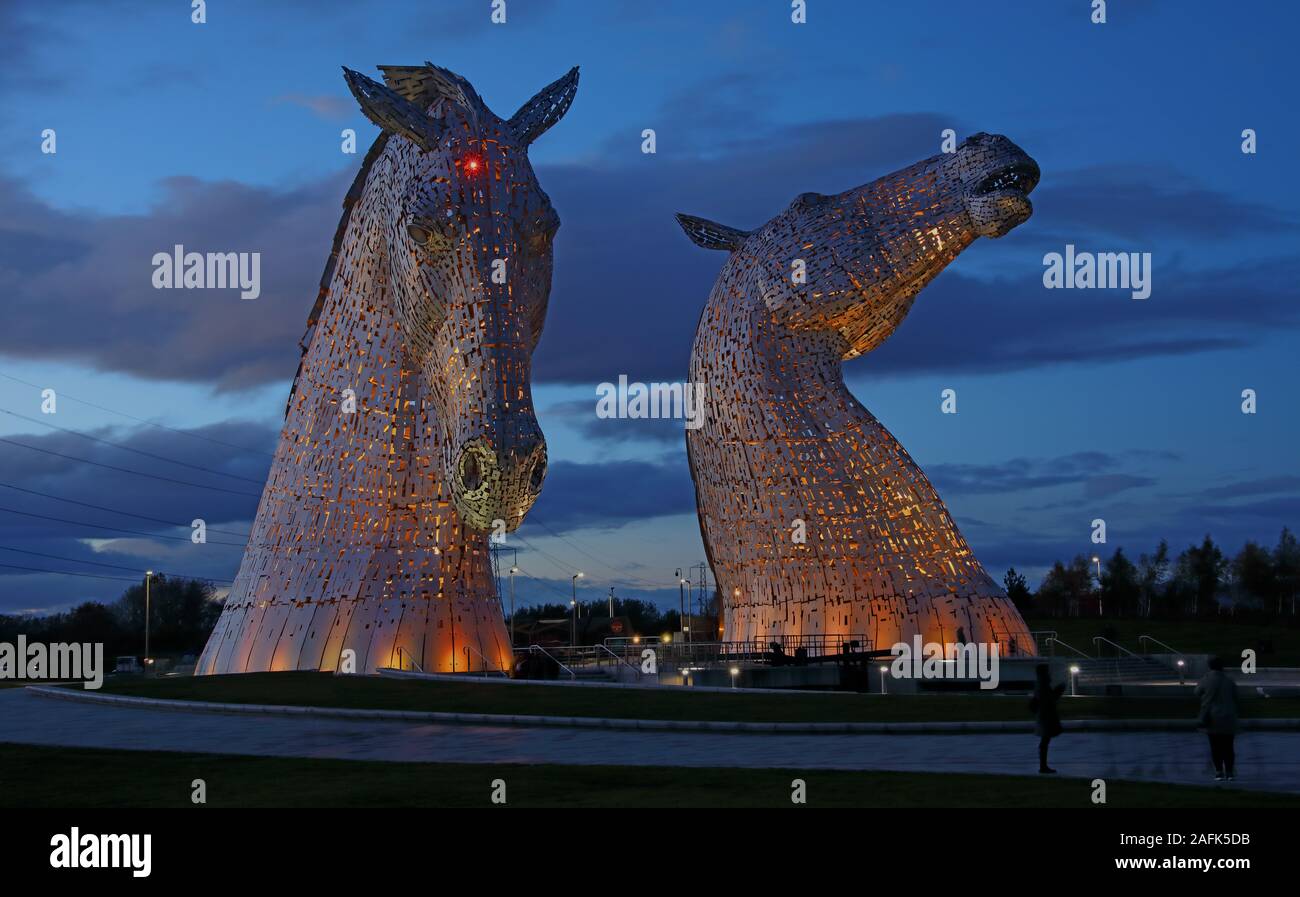The Kelpies, Connecting Communities in the Falkirk Council Area, Forth and Clyde Canal at dusk, Scotland, UK

Image details
Contributor:
Tony Smith / Alamy Stock PhotoImage ID:
2AFK5DBFile size:
77.7 MB (1.7 MB Compressed download)Releases:
Model - no | Property - noDo I need a release?Dimensions:
6612 x 4108 px | 56 x 34.8 cm | 22 x 13.7 inches | 300dpiDate taken:
27 October 2018Location:
Visitor Centre The Helix, Falkirk,Scotland, UK, FK2 7ZTMore information:
The Kelpies are 30-metre-high horse-head sculptures depicting kelpies (shape-shifting water spirits), standing next to a new extension to the Forth and Clyde Canal, and near River Carron, in The Helix, a new parkland project built to connect 16 communities in the Falkirk Council Area, Scotland. The sculptures were designed by sculptor Andy Scott and were completed in October 2013. The sculptures form a gateway at the eastern entrance to the Forth and Clyde canal, and the new canal extension built as part of The Helix land transformation project. The Kelpies are a monument to horse-powered heritage across Scotland. The sculptures were opened to the public in October 2013 . As part of the project, they will have their own visitor centre, and sit beside a newly developed canal turning pool and extension. This canal extension reconnects the Forth and Clyde Canal with the River Forth, and improves navigation between the East and West of Scotland. The name was chosen by Scottish Canals at the inception of The Helix project, in 2005. The Kelpies name reflected the mythological transforming beasts possessing the strength and endurance of 10 horses; a quality that is analogous with the transformational change and endurance of Scotland's inland waterways. The Kelpies represent the lineage of the heavy horse of Scottish industry and economy, pulling the wagons, ploughs, barges and coalships that shaped the geographical layout of the Falkirk area. According to sculptor Andy Scott, "The original concept of mythical water horses was a valid starting point for the artistic development of the structures." He also said that he “took that concept and moved with it towards a more equine and contemporary response, shifting from any mythological references towards a socio-historical monument intended to celebrate the horse’s role in industry and agriculture as well as the obvious association with the canals as tow horses”.